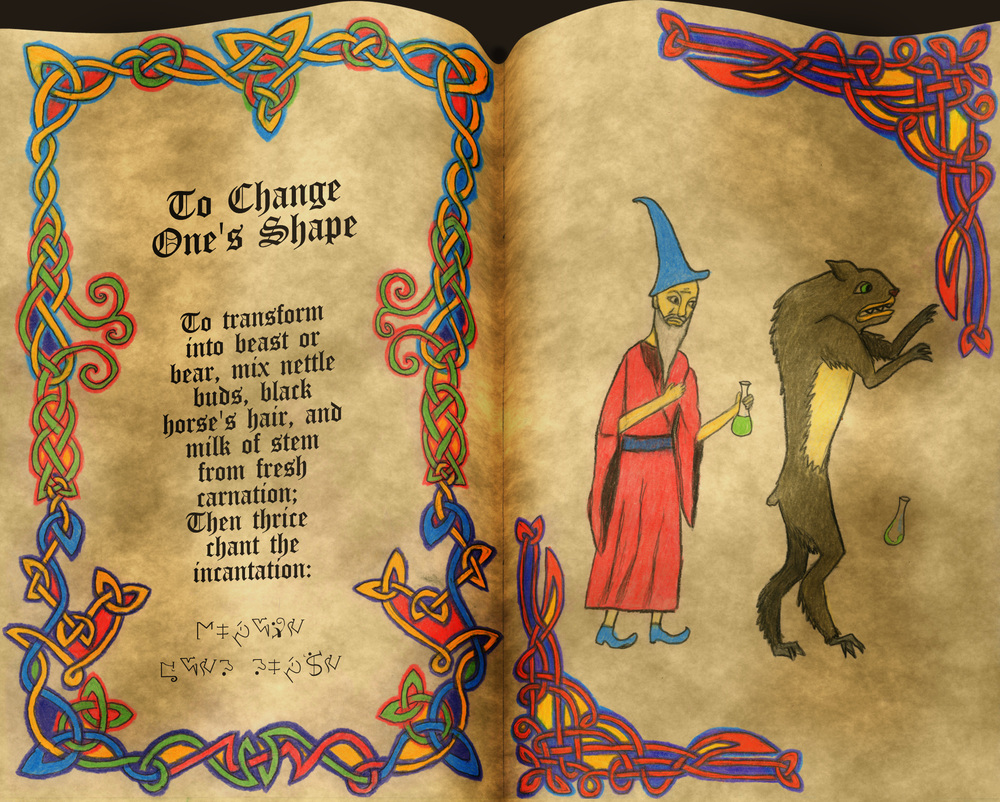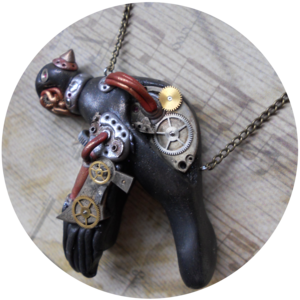Meet Our Friends: Chelsea Komschlies, Composer
 Chelsea and our founder, Jessica, have developed a long-distance relationship as they work on bringing Chelsea’s pieces to life.
Chelsea and our founder, Jessica, have developed a long-distance relationship as they work on bringing Chelsea’s pieces to life.
Jessica:
What I think is so cool about Chelsea, and a key factor behind her music’s power, is that she approaches it as a multi-media artist. She approaches composition not just as sound but really as auditory art–and you can hear that in her music. We can hear that she thinks about texture and structure in the way a visual artist can rather than just a musician. In this way she really tells us a story with setting and structure and often characters and plot.
Yet, as fancy, intellectual, and abstract as that sounds, what I love most about Chelsea is that her music is accessible right away. Whether you are an experienced professional or attending your first classical concert, you will find her music full of emotion, story, and fun from the first listen. And yet you could never be bored. Her music is so rich and multi-layered that as soon as I finish listening or playing, I already want to experience it again. Her style is expressive and unmistakeable, and every time I hear a new piece by her I recognize her in it and I love it right away.
I am so excited for us to share her music with you.
(see below for details)
We performed her music at our multi-media show, Peter and the Wolf and Friends on October 3, so we love talking to her about lots of different types of art.
Interview
CMwF: How do you think different artistic media differ and how can they work together?
Chelsea: I think part of what makes art so powerful and necessary is its ability to communicate abstract ideas and information in a way that concrete verbal descriptions cannot. All of the different artistic media are capable of this kind of deep-level communication in their own ways. Poetry can simultaneously conjure sound-associations as well as use the available meanings of words and phrases to allude, paint an imaginary picture, even contradict itself in potent ways through unexpected juxtapositions. Dance is obviously heavily connected to other visual arts and carries visual associations through its gestures; it even shares descriptive terms with visual arts, such as the “arabesque.” Dance is a kind of acting; a dancer, with a slight alteration of the facial expression and the way the right arm is held, the way the left foot is shaped, can portray and communicate deep-level mental and emotional states to the audience.
Drawing, painting, and sculpture possesses a spectrum from completely concrete, realistic depictions of recognizable things to total abstraction. Music is often said to be the most abstract art form, but it is perhaps better to say it has its own way of being abstract. Music can mimic speech-like phrases, follow emotional contours and move people to feel different emotional states. It can conjure almost tactile or visual experiences, leading to the sort of descriptions as “gauzy,” “luminous,” “hard-edged,” and the like. I am particularly interested in composing music in such a way that audiences actually “see” textures, surfaces, or scenes.

For example, in my string quartet Un fond de paysage triste et glacé (a sad and frozen landscape) [found later in this interview], I want listeners to “feel” cold and experience the lonely, barren winter landscape of the Debussy prelude that inspired the piece, and I do that through texture and musical gesture. In my piece for for winds Beyond Machines I want listeners to actually see foreboding sci fi machinery – metals, silvers, blacks, etc.
CMwF: You often create art for the covers of your pieces. But you’ve also done some works with visual components like Book of Spells. How did you decide to add that rather than leaving the music to speak for itself? How do the musical and visual aspects influence each other as you create it?
Chelsea: I really enjoyed creating the art for Book of Spells. The artwork was actually part of the commission from the beginning [by the amazing duo, Magic Deuce], but it was mostly completed after I had written the majority of the music. I almost always have some sort of imaginary visual inspiration for the music I write, so in a way, every piece I have written has a “visual component,” just one that no one else could literally see. When I compose, I’m always working to create music that stands on its own without a visual component even if there is one, but visuals can help the meaning of the music shine through. I actually do try to point listeners in the right direction this way through the titles, cover art, fonts, program notes, etc. that I use.
I was very excited when Eric and Caitlin wanted visuals to be part of the actual commission. It wasn’t another case of me thinking “maybe I’ll add visuals to this piece someday,” but a real part of what was being asked of me the composer, so I could pour my time into it as much as I did with the music.
CMwF: What do you think about the inventor in the piece we play, Steam? What inspired you to tell his story and what was the process like of figuring out his story?
Chelsea: Steam has an interesting beginning. The very first part of the piece that I wrote was the (devilishly hard, I later found when learning the flute part for the first time!) octatonic sequence section towards the end of the last movement, right before the melody returns. It was actually part of a weekly theory assignment when I was a sophomore in college! We had just learned about the octatonic collection in class, and the instructions were to create a few lines of music exploiting the octatonic collection’s ability to create triads and to sequence. I thought I might use my response in a piece at some point. Later that year, unrelated to this, I had begun to get into jewelry-making, and in my searching online for what other designers were making, I stumbled upon something new to me: Steampunk.
Steampunk often takes something familiar, elegant, or normal and distorts it in uncanny or whimsical ways.
I instantly fell in love and started creating steampunk jewelry. I decided to try writing a steampunk piece, and thought that octatonic melody I had written for theory class would work perfectly. Thus, Steam was born.
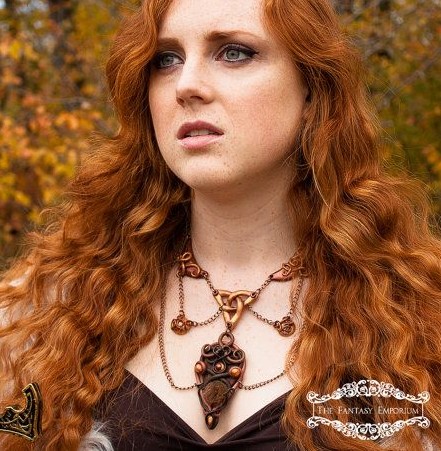
The inventor is ingenuitive, intelligent, and elegant, but eccentric and a little lost in his own world. I imagine him as a quirky grandfather-type, with disheveled hair, haphazard magnifier glasses on his face with lenses sticking out everywhere, a temperamental old pocket watch on a chain, and an elegant bronze-colored waistcoat with the buttons off by one. His workshop is full of strange things ticking and bubbling – tubes of green liquid, wobbling pressure gauges, and buzzing mechanical motors. The four movements of the piece each tell a different facet of the story. First we are introduced to the inventor in his workshop, then we see a portrait of him, next a portrait of the machinery itself, and finally the excitement of haphazard flight in his newly created contraption.
[next CMwF performance of Steam is November 15, 2015)
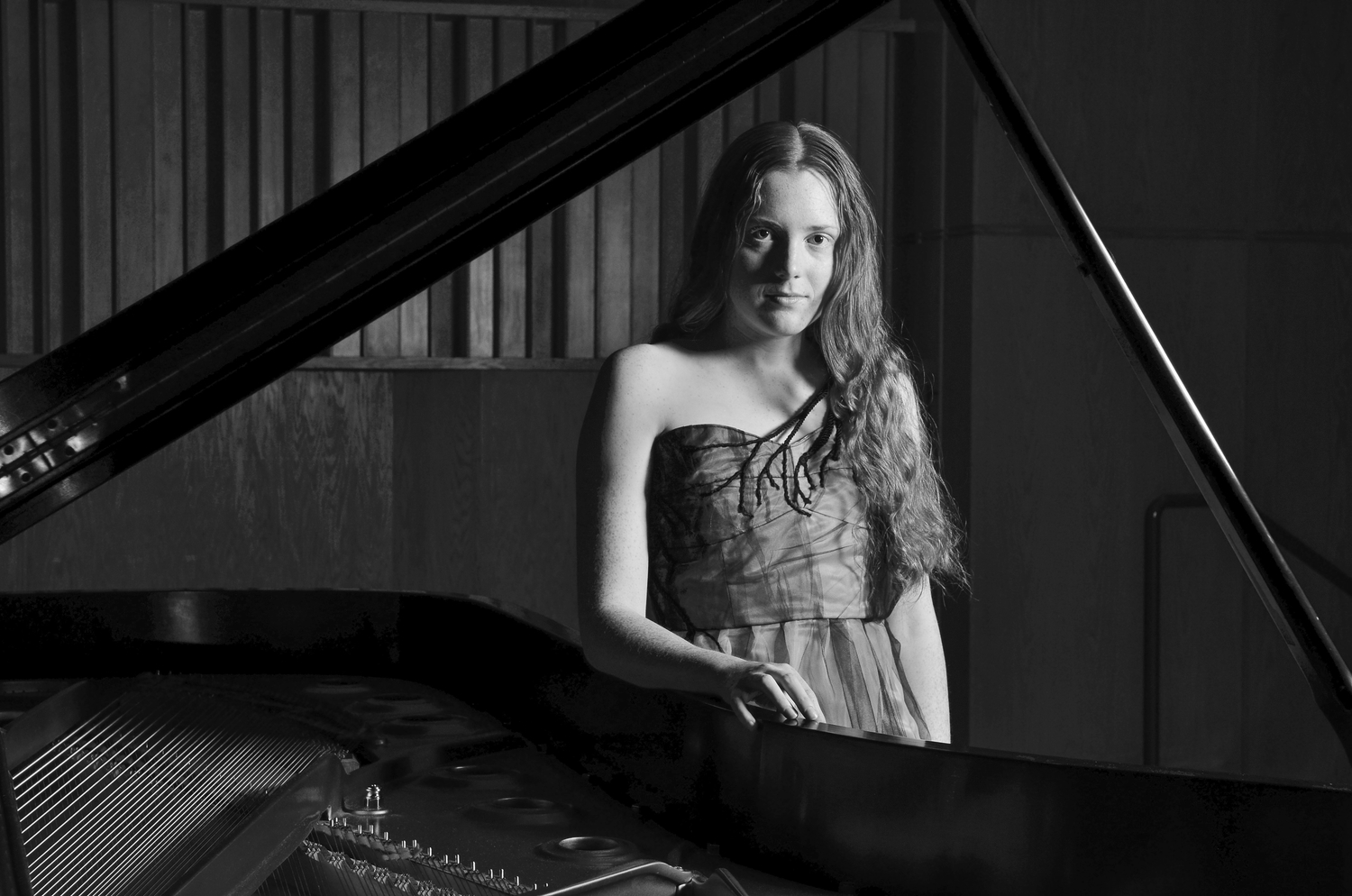
CMwF: Do you have any advice for Friends at home who want to draw music?
Chelsea: I guess my best advice would be to immerse yourself in other’s creative work – listen to tons of music of any genre you like, read novels, play games, watch films, and also to create artworks of your own in various media – draw, sculpt, design, write a short story. Growing up I did all of these and more, and it really fueled my creativity and ability to design worlds and situations in my mind. I was a visual artist long before my musical interests came along, and still visual art comes to me infinitely more easily than writing music. Composing is hard! But it does come more naturally with practice and experimentation. For anyone interested in writing music who currently thinks “Oh I could never do that,” not true! A good place to start is figuring out melodies you know on a keyboard or other instrument, and then to try arranging known melodies for instruments of your choice. Invest in a copy of a music notation program, and notate your arrangements. This is how I started in high school, and after a couple of years of arranging, I composed my first piece.
CMwF: Do you have any favorite instruments to write for?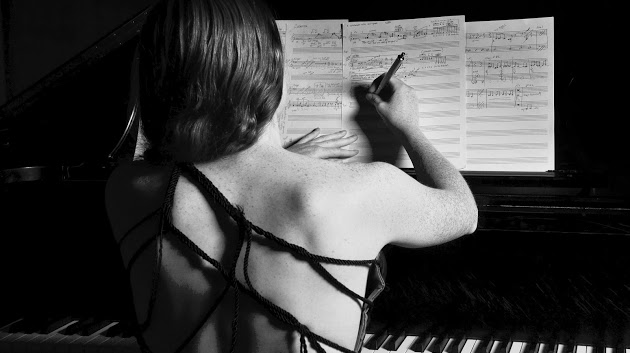
Chelsea: It totally depends on the piece, what the inspiration was and what the piece needs to achieve it. In general I love writing for strings; they blend so well and have such a range of possibilities when it comes to bowing and extended techniques. They can be lush and cinematic or dry, brittle, and raspy, and everything in between.
I also like writing for flute, since that is my instrument.
 I always feel more pressure writing for flute for that very reason, however. Much of my flute writing has been about creating my own extended techniques, microtonal fingerings, etc. This is usually accomplished by messing around and experimenting on my own instrument (I’m sure the sounds coming from my office must sound very strange to people walking by!)
I always feel more pressure writing for flute for that very reason, however. Much of my flute writing has been about creating my own extended techniques, microtonal fingerings, etc. This is usually accomplished by messing around and experimenting on my own instrument (I’m sure the sounds coming from my office must sound very strange to people walking by!)
CMwF: Do you have any favorite pieces?
Chelsea: Debussy is my favorite composer. He has a depth and a darkness to his writing, combined with such imaginative methods of musical portrayal. I love his preludes for piano. My favorite is “Des pas sur la neige” (footsteps in the snow). In my opinion it is one of the most fascinating three and a half minutes of music ever written. I’ve already written two pieces inspired by it [see Un fond de paysage triste et glacé below] . I have so many other favorite pieces, too many to name!
CMwF: Sometimes when you recommend a new band to a friend you tell them to start with a specific song rather than leaving them to fend for themselves through multiple albums. Usually you pick one you think your friend will like and yet representative of who they are.
Do you have a piece like that our audience should hear to get to know you better?
Chelsea: At this point I’ve just recently finished my masters degree, and my style changed dramatically during those two years at CU-Boulder, so it’s definitely hard to pin down my style in one piece at the moment. But if I had to choose one, I would probably offer my first string quartet, Un fond de paysage triste et glacé, which was inspired by Debussy’s “Des pas sur la neige,” [“footsteps in the snow”]. It represents a step toward a new place I am exploring compositionally in which melodic lines don’t take such a front seat like they have in my past pieces, and instead texture takes center stage. My goal through this increased amount of abstraction is actually to create a listening experience that is more powerful, dramatic, and meaningful for the listener. In this piece, which means “a sad and frozen landscape,” I’ve taken my emotional interpretation of the Debussy prelude and turned it into texture, though at times one can hear notes or harmonies from the Debussy peeking through, just barely visible. I’m looking forward to exploring texture-composition further and seeing where it takes me.
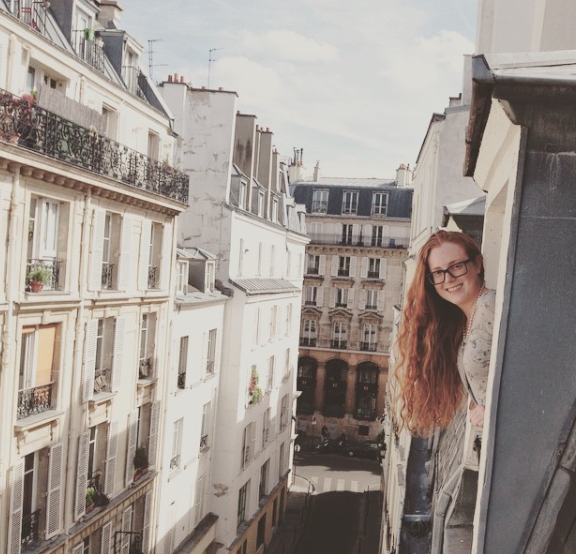
CMwF: Do you have any exciting performances or releases coming up?
Chelsea: Well, next up I have the performance of a commission from the Colorado New Music Ensemble in Boulder in November (date/time TBD). The piece is called Wildheart and is inspired by the forest at night. It features electric guitar, and I had the fortune to work with my friend JP Merz, who is also a composer, on the guitar part. Also coming up, the Fifth House Ensemble will be playing Steam at the College Music Society’s upcoming national conference in Indianapolis at the beginning of November. Finally, band nerds stay tuned! I will be composing a piece for the Symphonic Band at the University of Calgary, and it should be available in spring 2016. Spread the word to your favorite band director!
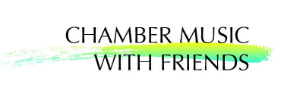
Chamber Music with Friends, Inc. is a non-profit arts organization that brings artists of different backgrounds together for fun, unique, and welcoming performances.
Jessica has been working with Chelsea to perform an adaptation of Chelsea’s Fear A Bhata, originally for violin at the Chamber Music with Friends Friends of Folk show October 25, which features classical music inspired by folk songs alongside folk performers. This performance features the original folk song as well as Chelsea’s version.
Chamber Music with Friends will perform Chelsea’s Steam as part of our Coffee Hour with Friends show November 15, 2015.
Learn more about Chelsea on her really awesome and detailed website here (really, it’s a fun one): komschlies.com
Join our Newsletter,
Find us on Facebook, Instagram, Twitter
Hear about upcoming shows, news, and interviews from your musical Friends





